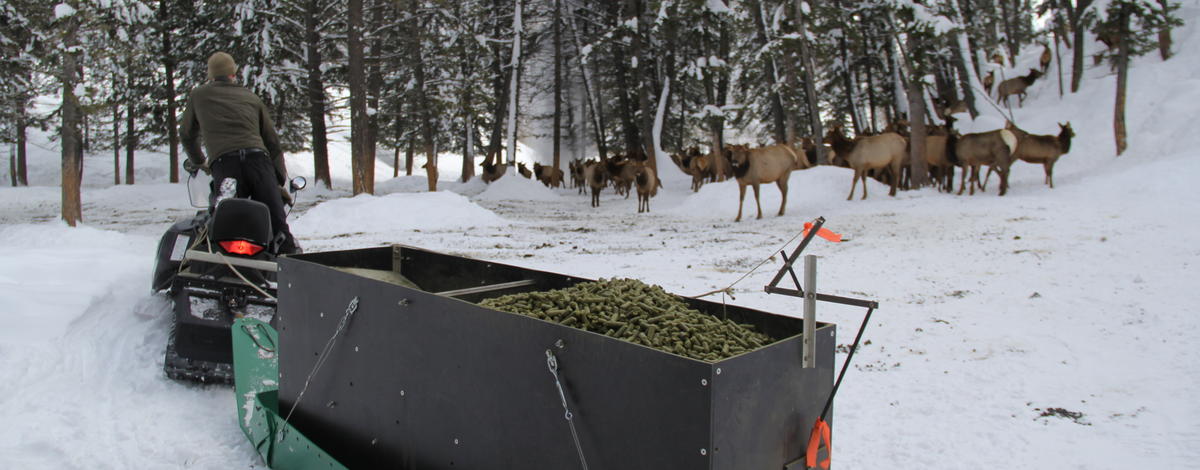Link to videos of wintering wildlife and winter feeding here.
Photos and cutlines are below.
This winter’s cold temperatures and deep snow at low elevations has prompted Idaho Fish and Game to implement emergency big game feeding at nearly 110 locations across southern Idaho. Winter conditions in the Panhandle, Clearwater and Salmon areas are normal and emergency feeding is not necessary there.
Here are some details why we’re feeding, how we’re protecting public safety, and measures taken to prevent and mitigate damage to private lands from big game.
- Emergency feeding has several goals, including helping some animals get through winter, particularly mule deer, and keeping wildlife away from agriculture operations, highways and populated areas where they can be hazards or nuisances. Fish and Game has in several cases successfully herded large elk herds away from agricultural lands and highways into suitable winter range.
- Fish and Game is expecting to spend $650,000 to feed big game this winter. The department spent $387,000 in 2008; the last big year for winter feeding. Accounting data shows this winter will be the most spent since at least 2003 (records beyond that are difficult to obtain).
- The department has closed many of its wildlife management areas to public access to protect wintering wildlife and is asking the public to avoid areas where big game animals are congregating. Our goal is to keep herds in those protected areas.
- Fish and Game is currently monitoring nearly 1,700 radio-collared deer and elk, including adults, calves and fawns. Game managers have real-time data on the survival of those animals, which provides valuable information about the larger populations.
- Wildlife managers are most concerned about mule deer herds because southern Idaho has record accumulations of snow at low elevations and persistent cold temperatures where deer winter. Deep, crusty snow and frigid temperatures makes it difficult for deer to feed on natural forage and also taxes their limited fat reserves.
- Mule deer fawns have the most difficulty surviving winter because they’re the smallest animals in the herd and carry the least amount of fat. The primary determinate of winter survival is fawn weight coming into winter. Winter feeding has a very limited effect on fawn survival, and being the smallest, they often have difficulty competing for feed.
- Even in severe winters, statewide doe survival typically exceeds 90 percent, however, some herds may have more animals succumb to winter kill. Older, post-breeding age does are the adults most likely to die during winter, but the majority of breeding does are expected to survive.
- Elk are hardier than deer and less prone to winter kill, however, we are feeding them in many locations to keep large herds away from private lands, particularly agriculture lands, and also away from highways.
- Fish and Game is working with private land owners to help mitigate and compensate for losses from wintering wildlife. In 2016, Fish and Game paid to construct about 100 enclosures to protect haystacks from big game. Those efforts appear to be paying off. The department has also distributed thousands of panels and rolls of temporary fencing to land owners to keep deer, elk and antelope out of hay stacks.
Photos credit: Idaho Fish and Game
To download, click on the photo, then click on the "download" link.
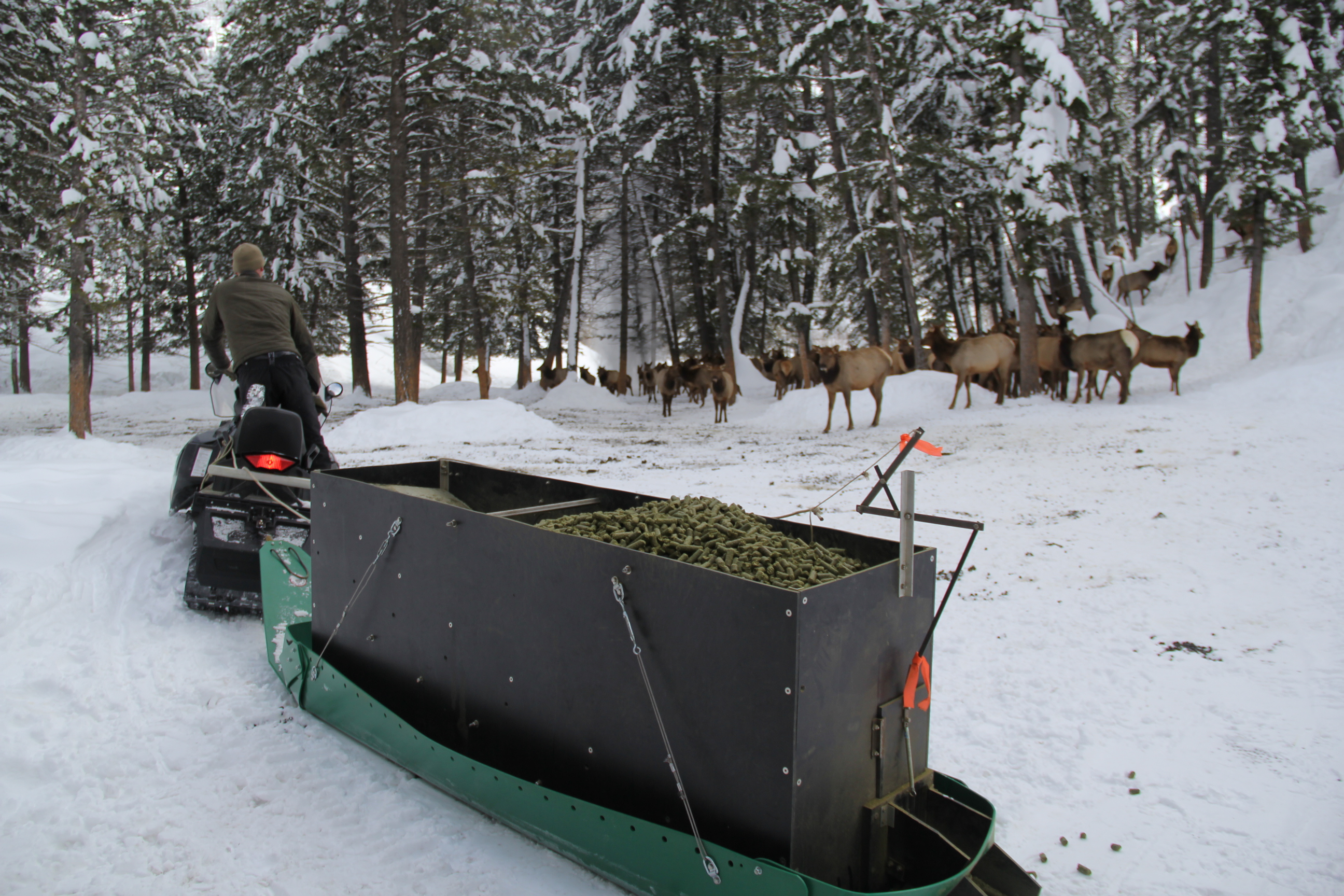
Suggested cutline: Idaho Fish and Game is feeding big game animals at nearly 110 sites this winter and expects to spend about $650,000 on the effort.
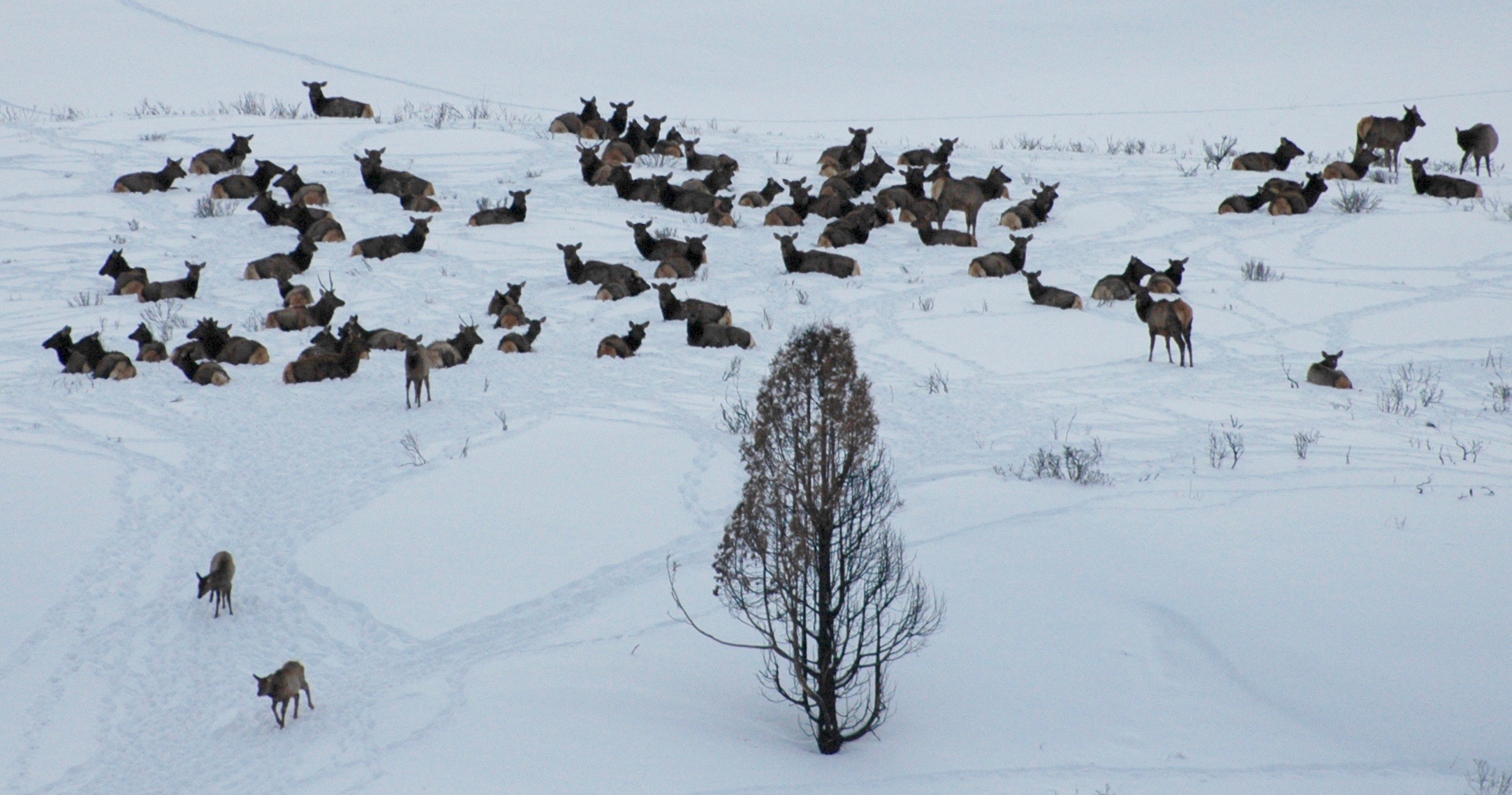
One of the goals of feeding elk is to keep them on traditional winter range and away from agriculture lands.
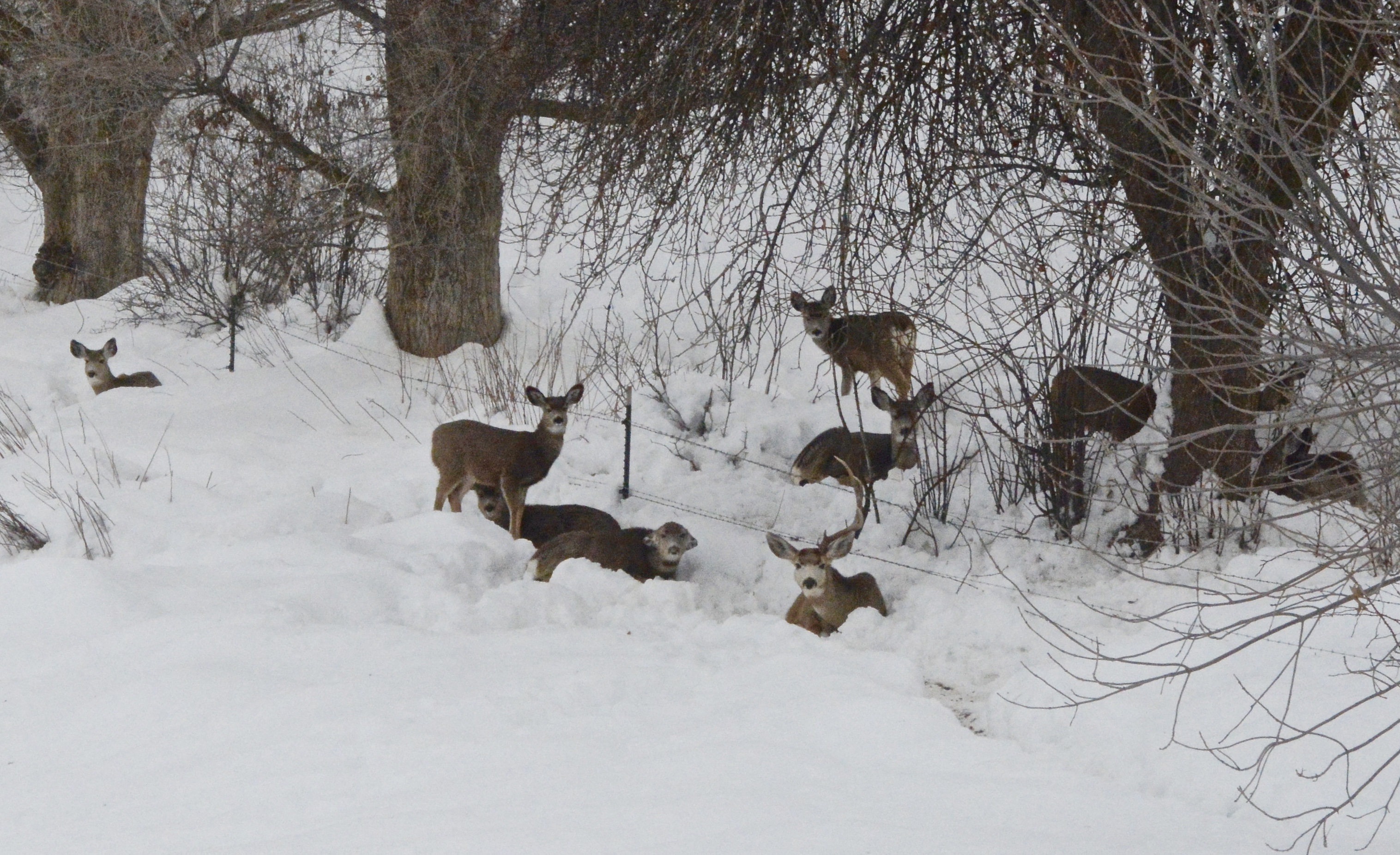
Mule deer herd rests in the snow near Weiser. One of mule deers' main survival strategies is conserving energy during winter.

Idaho Fish and Game is feeding thousands of deer and elk this winter due to extreme conditions.
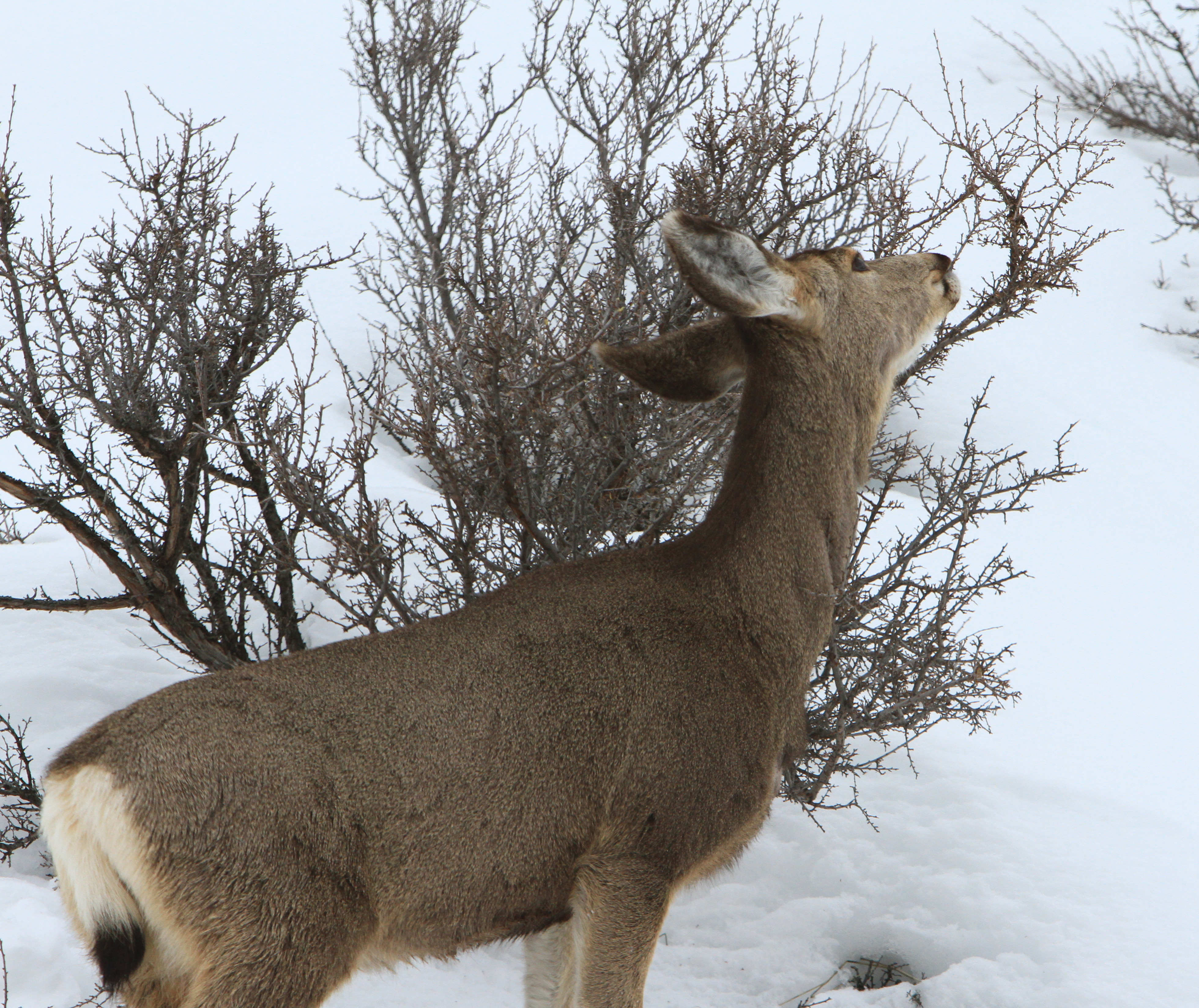
Mule deer have adapted to sustain themselves through difficult winters if there's adequate winter range and they're relatively undisturbed.

Idaho Fish and Game tries to prevent big game from taking up residence in agriculture operations, but when it happens, landowners can receive compensation for damage done by wildlife.

